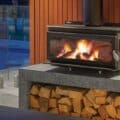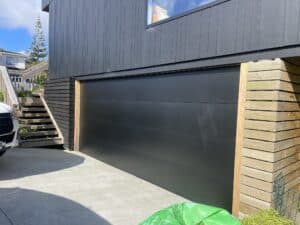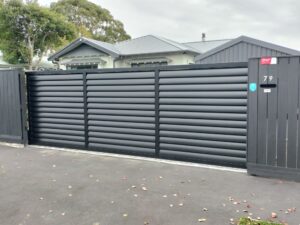Choosing the Right Fireplace for Your New Build in the Waikato
When building a new home in Hamilton or the wider Waikato, one of the most important, and often overlooked, decisions you’ll make is how to heat it. Whether you’re planning a build in Flagstaff, Frankton or Cambridge, it’s important to choose a fireplace that suits your space, lifestyle, and budget, not just your aesthetic.
In this guide, I’ll walk you through the key differences between wood vs gas fireplaces, the pros and cons of each, and what to consider when planning your heating system for a new build
What’s the Difference Between a Wood and Gas Fireplace?
If you’re comparing gas fireplaces vs wood fireplaces for your new home, it helps to understand how they work and what they offer.
What Is a Wood Fireplace?
A wood fireplace, also known as a wood burner, burns dry firewood to produce heat. These fires provide strong radiant warmth and have been a long-time favourite in New Zealand homes, especially in colder areas like the Waikato.
Today’s wood burners are much more efficient and cleaner-burning than the old-style open fireplaces. In Hamilton City, only approved clean air wood burners can be installed in new homes, so it’s important to check compliance when choosing your model.
What Is a Gas Fireplace?
A gas fireplace uses natural gas or LPG to create flame and heat. They often come with a remote or wall switch and can be turned on or off instantly. Gas fires are a popular choice for homeowners who want easy, low-maintenance heating with a modern design.
In new subdivisions like Peacocke, Rototuna, or Huntington, mains gas is sometimes available – but not always. If natural gas isn’t connected, bottled LPG can be used, although it comes with added refilling and placement considerations.
Pro Tip for Newbuild Hamilton Homeowners:
If you’re building in a newer development like Peacocke or Rototuna, always check for natural (reticulated) gas availability before settling on a gas fireplace. The cost and practicality of installing bottled gas can change your plans and your budget.
Pros and Cons of Wood Fireplaces for Your New Hamilton Home
If you’re building a new home in Hamilton or the surrounding Waikato area, a wood fireplace remains a popular and practical heating choice – especially for those who value strong heat output and a traditional atmosphere. But before you commit, it’s important to understand both the benefits and what’s involved in staying compliant with local council rules.
Benefits of Installing a Wood Fireplace
1. Strong, Reliable Heat Output
Wood burners produce a powerful radiant heat that spreads well through large or open-plan homes. For new builds in areas like Tamahere, Matangi, or semi-rural Hamilton, a properly installed wood burner can easily heat your main living space and more.
2. Lower Running Costs Over Time
If you can access affordable or self-sourced firewood, wood burners can be significantly cheaper to run than gas or electric heating. Many homeowners in the Waikato buy firewood in bulk during summer when prices are low – saving money through winter.
3. Works Without Power
Wood burners don’t rely on electricity or a gas connection. In rural areas or homes that experience occasional outages, this makes them a reliable and self-sufficient option.
4. Adds Character and Atmosphere
The soft crackle, glowing embers, and scent of a wood fire add warmth and character to a home that no other system can match. For many Waikato families, a wood burner creates a nostalgic, comforting environment, especially on frosty nights.
5. Sustainable When Used Responsibly
When you use locally sourced, dry firewood from renewable suppliers, wood heating can be an eco-friendly option with a smaller carbon footprint, particularly compared to imported fuels or coal-based electricity.
Drawbacks of Wood Fireplaces
1. Needs Storage and Effort
You’ll need a dry, sheltered area to store 3–6 cubic metres of wood each year. Chopping, stacking, and handling firewood takes time, which is something to consider if you have a tight schedule or limited outdoor space.
2. More Maintenance Required
Wood burners require regular chimney sweeping, ash removal, and flue inspections. This keeps your fire safe and efficient but adds to your ongoing home maintenance list.
3. Not Ideal for Small Homes or Tight Spaces
In compact homes or sections with limited room, a wood fire may be too large or impractical. Flue placement and clearance requirements can also be harder to meet in these cases.
4. Takes Time to Heat Up
Unlike gas, a wood fire needs to be lit, fed, and managed. It takes a bit of time before the full warmth kicks in, which may not suit every homeowner’s lifestyle.
Hamilton City Council Regulations for Wood Fires
If you’re building within the Hamilton City boundary, you’ll need to comply with local air quality rules when installing a wood burner. These regulations are designed to reduce air pollution and ensure fireplaces meet national environmental standards.
Here’s a quick list on what you need to know:
- Only clean air approved wood burners can be installed in new homes. These must meet emission and efficiency standards set by the Ministry for the Environment (MfE).
- Approved models must emit no more than 1.5 grams of particulate matter (PM10) per kilogram of dry wood burned, and have a minimum efficiency of 65%.
- Open fireplaces are not permitted in new builds or renovations unless they are decorative and non-functional.
- You’ll need to apply for building consent through Hamilton City Council. This includes ensuring correct flue height, safe clearance from walls or furniture, and proper installation by a certified professional.
- The 2-hectare rule: If your property is larger than 2 hectares, you are not restricted to clean air-approved burners and can install a wider range of models. However, good practice and responsible wood use are still encouraged.
You can check the full list of compliant models on the Ministry for the Environment website or contact Hamilton City Council directly to confirm what’s allowed for your specific area.
Pro Tip:
Always burn dry, seasoned wood only. Not only does it burn hotter and cleaner, but it also protects your flue and chimney from dangerous build-upkeeping your system safe and compliant with council rules.
Pros and Cons of Gas Fireplaces for New Homes in Hamilton
If you’re looking for a heating option that’s low-maintenance, efficient, and easy to operate, a gas fireplace could be the right fit for your new Hamilton home. Gas fires have become increasingly popular in modern builds, especially in compact homes or townhouses where convenience and design are key.
Let’s take a closer look at the benefits and drawbacks of gas fireplaces, especially as they apply to homes across the Waikato region.
Benefits of Gas Fireplaces
1. Instant Heat at the Push of a Button
Gas fires offer quick, consistent heat with no prep work. Most units come with a remote or wall switch, making them ideal for busy households or those who want warmth on demand.
2. Clean and Low-Maintenance
Unlike wood fires, there’s no ash, soot, or smoke to deal with. You won’t need to clean out a firebox or worry about chimney sweeping, just a routine annual service.
3. Sleek, Modern Look
Gas fireplaces are available in a wide range of styles, from traditional log-effect fires to ultra-modern, frameless wall inserts. They work well in new builds with a minimalist or open-plan aesthetic, which is common in many new Hamilton subdivisions like Flagstaff, Peacocke, and Huntington.
4. No Firewood Needed
There’s no need to chop, store, or carry wood, making gas fires perfect for homes with limited outdoor space or for owners who don’t want the hassle.
5. Zoned Heating
Some models allow you to control heat levels more precisely, helping you save energy and avoid overheating smaller spaces.
Drawbacks of Gas Fireplaces
1. Higher Running Costs
Natural gas and LPG prices can vary, and costs can add up during long cold spells. This is especially important to consider if your fireplace will be used as your main heating source.
2. Less Heat Output for Large Homes
While gas fires are efficient, they generally don’t produce the same intense heat output as a high-capacity wood burner. They’re best suited for smaller or well-insulated homes.
3. Dependent on Utility Connections
Gas fires need a gas supply—either via natural gas (if your street has it) or LPG cylinders. Some newer Hamilton subdivisions don’t have natural gas lines, so you may need to factor in the cost and logistics of bottled gas.
4. Less Atmosphere than a Real Flame
While many gas fires replicate the look of a log-burning fire, you won’t get the crackle, scent, or full sensory experience of burning real wood.
Pro Tip:
Choose a gas fireplace with a fan or convection system. This helps push warm air further into your living space, especially helpful in open-plan rooms or areas with high ceilings.
Wood vs Gas Fireplace: A Side-by-Side Comparison for Hamilton Homes
Still unsure whether to choose a wood burner or a gas fire for your new home in Hamilton? The right option depends on your home design, location, lifestyle, and heating needs.
Here’s a simple side-by-side comparison to help you weigh the key differences between wood and gas fireplaces.
Wood Fireplaces vs Gas Fireplaces – What’s the Difference?
| Feature | Wood Fireplace | Gas Fireplace |
| Heat Output | Strong radiant heat. Great for large, open-plan or older homes. | Even, moderate heat. Best for well-insulated, compact, or modern homes. |
| Convenience | Requires time to light, feed, and maintain. | Instant heat at the press of a button. Low effort. |
| Fuel Type | Seasoned dry firewood. Needs storage space. | Natural gas (if available) or LPG cylinders. No storage required. |
| Running Costs | Low (if wood is sourced affordably). | Moderate to high depending on gas prices and usage. |
| Maintenance | Needs annual chimney sweep and regular ash cleaning. | Requires yearly servicing, but little to no daily maintenance. |
| Power Outage Friendly | Works without electricity, great for rural homes. | Won’t operate during outages unless it has battery backup. |
| Ambience & Feel | Real flame, scent, and crackle, classic Kiwi fireplace experience. | Visually appealing, but lacks the sensory elements of real wood. |
| Council Restrictions | Must be clean-air approved if under 2ha in Hamilton City limits. | Still requires consent and gas certification, but fewer emissions concerns. |
| Eco Impact | Sustainable when burning dry, local wood responsibly. | Cleaner-burning, but relies on fossil fuels. |
| Installation Cost | $3,500–$5,500+ (depending on model and flue system). | $4,000–$8,000+ (depending on gas availability and setup complexity). |
| Best For | Rural homes, large builds, traditional setups, off-grid resilience. | Urban homes, busy families, low-maintenance living, design-focused spaces. |
Still Can’t Decide?
Think about how involved you want to be in managing your heating. If you’re after a “set-and-forget” solution, gas may be better. If you enjoy the process and warmth of a real fire and have the space, wood is often more cost-effective long term.
Final Thoughts: Which Fireplace is Best for Your New Hamilton Home?
Choosing between a wood or gas fireplace depends on your lifestyle, home size, location, and heating priorities.
- Wood Fireplaces offer authentic warmth, strong heat output, and cost savings, especially suitable for larger homes and rural Waikato properties. But they require more effort in maintenance and firewood management.
- Gas Fireplaces provide instant, clean heat with minimal fuss, perfect for busy urban families and modern, smaller homes. They come with higher running costs and rely on gas supply availability.
Remember, the right choice will keep your family comfortable through Waikato’s cool winters while fitting your home and budget.













